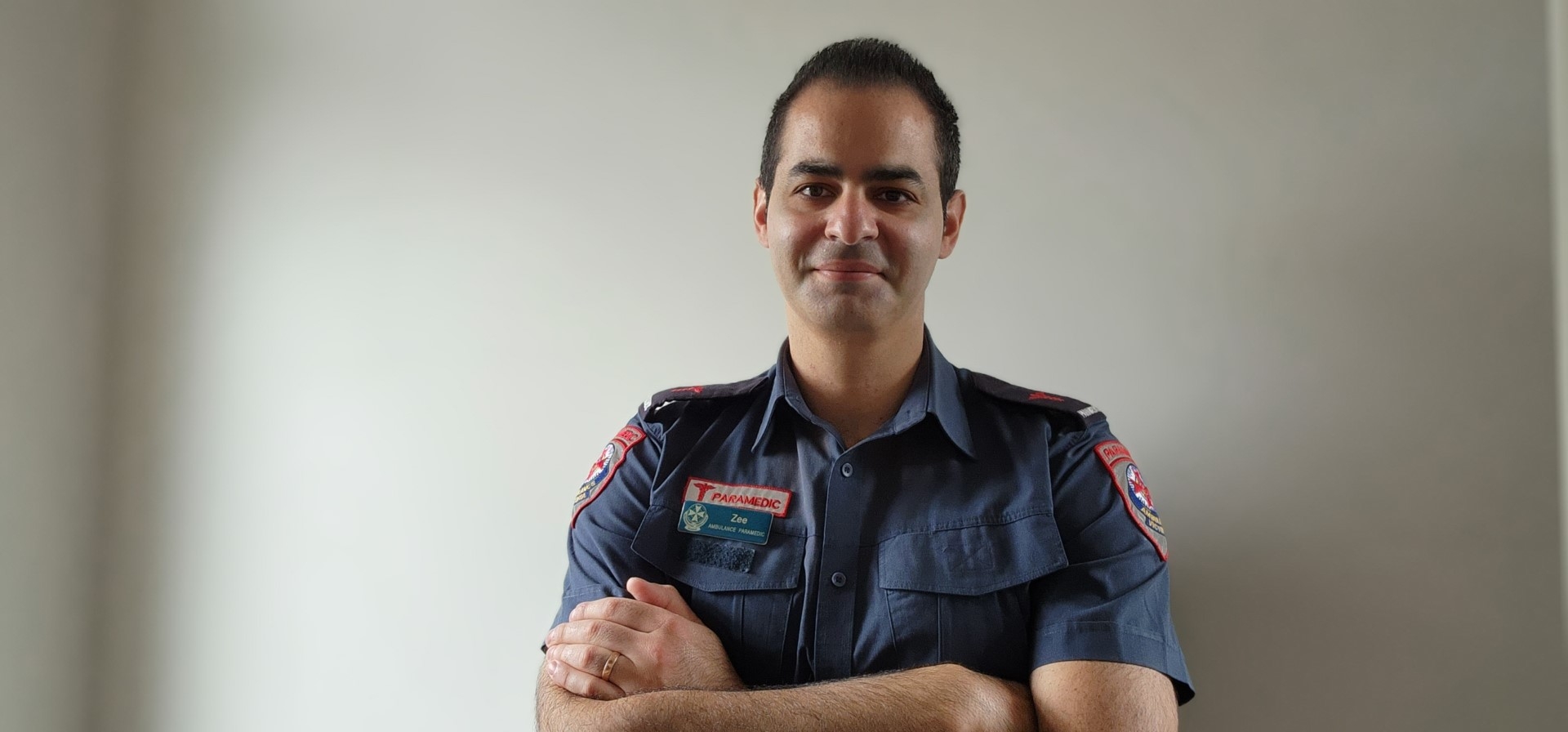
Q&A with Dr Ziad Nehme
Dr Ziad Nehme is a 2021 Heart Foundation Future Leader Fellow at Monash University. Dr Nehme is a qualified Advanced Life Support Paramedic and Clinical Researcher at Ambulance Victoria. He has expertise in pre-hospital emergency care and resuscitation research.
What are you currently researching?
Cardiac arrest is where the heart suddenly stops beating. When someone is in cardiac arrest, they lose consciousness and will not be breathing normally. An out-of-hospital cardiac arrest is where a person has a cardiac arrest in the community, rather than in a hospital setting. It is a very serious medical emergency, and every minute counts. For every minute that passes without life-saving cardiopulmonary resuscitation (CPR), survival falls by 10%. The ‘chain of survival’ represents a series of globally-recognised interventions to improve outcomes in people who have an out-of-hospital cardiac arrest. My research program aims to improve outcomes through the development of world-first, evidence-based treatments that optimise the links in the chain of survival. My objectives are to:
- increase community awareness and action in response to warning signs
- improve the identification of out-of-hospital cardiac arrest by triple zero (000) call-takers to reduce delays in providing telephone instructions for CPR
- test new interventions to increase rates of successful defibrillation (an emergency treatment to help the heart start beating again. A defibrillator is a portable machine that can detect an abnormal heart rhythm and deliver an electrical shock to return the heart rhythm to normal)
- improve the evidence base for post-resuscitation care (the care a patient receives after their cardiac arrest).
What difference will your research make to people’s cardiovascular health in Australia?
Out-of-hospital cardiac arrest is one of Australia's leading causes of death and a public health priority globally. There are almost 30,000 people who experience a cardiac arrest in the community every year, and any small improvements in care can have a huge benefit. For example, a 1% increase in the survival rate would mean almost 300 additional survivors every year!
Although there are many well-established treatments available for out-of-hospital cardiac arrest, too many people die before these treatments can be provided.
The biggest gains in survival will come from innovations in early detection, both before the cardiac arrest happens, to prevent it, and immediately after the cardiac arrest, to improve access to care. My research will address these critical issues by testing world-first preventive interventions that improve the community's awareness of the warning signs of cardiac arrest and the prompt delivery of treatment.
What motivated you to do your research?
This research has been shaped by my experiences as a paramedic over the past 15 years. During this time, I have attended countless cardiac arrests where resuscitation has been unsuccessful. In many of these cases, a call to triple zero (000) hasn’t been made as quickly as it should. This might be because the person having a cardiac arrest, or a bystander, has difficulty recognising the warning signs. Overcoming these barriers is critical to improving outcomes.
Are there any achievements or discoveries from the past year you can share with us?
I was recently awarded the prestigious Australia Day Honour, the Ambulance Service Medal, by the Governor-General. This award recognises service to advancing the science behind resuscitation and pre-hospital (ambulance) care.
Do you have a message for Heart Foundation supporters?
I would like to sincerely thank the Heart Foundation and its donors for supporting my research. Without the Heart Foundation, this critical work would not be possible. Heart Foundation support ensures that research into cardiac arrest can continue, which will drive improvement in outcomes for one of Australia's largest causes of death.